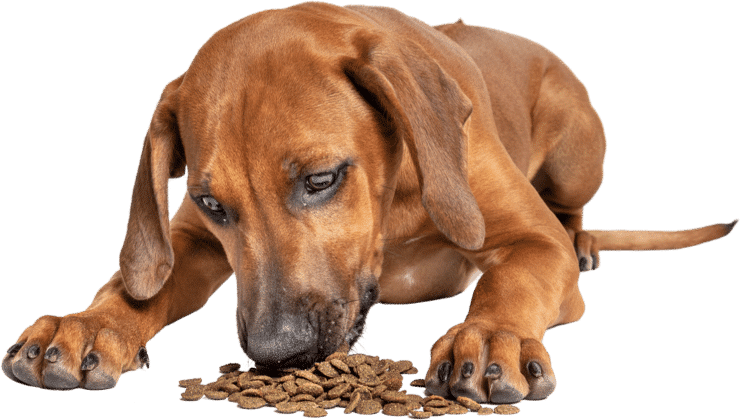If you’re someone who brings a keep cup to the café, buys secondhand when you can, or checks the label for where something was made — it makes sense to think about what your dog eats, too.
The good news? You don’t have to overhaul your entire life (or theirs) to make meaningful changes. In fact, what goes into their bowl might be one of the simplest — and most impactful — switches you can make.
Here are five ways to feed your dog in a way that better supports sustainable living and your dog’s health.
1. Choose a hypoallergenic protein
Many traditional dog foods rely on beef or chicken, but they’re among the most common allergens for dogs. That means more itchy skin, digestive upsets, and vet bills.
Hypoallergenic proteins — especially novel ones like insect protein — are far less likely to cause allergic reactions. Extraordinarily, they often require fewer resources to produce, which means fewer emissions and less environmental strain. It’s better for your dog’s stomach and the planet.
2. Look for Australian made dog food
Locally made supports Australian jobs and also means shorter supply chains, reduced food miles, and stricter production standards. Less transport means fewer emissions. And knowing exactly where your dog’s food is made? That’s peace of mind.
Wait — dogs have carbon footprints?
Yes, they do. And depending on their size and what they eat, it can be surprisingly big.
A 2017 study from UCLA estimated that pets (mostly cats and dogs) are responsible for around 25–30% of the environmental impact from animal agriculture in the U.S. That includes land use, water, and greenhouse gas emissions — largely from the meat in their diets.
Switching to a more sustainable protein source — especially one with a lighter footprint like insect protein — can reduce your dog’s impact without sacrificing nutrition. You’re feeding them better and smarter.
3. Ask where the protein is grown — not just what it is
Sustainable dog food isn’t just about what goes in the food — it’s also about how that food was produced.
Insects, for example, can be grown using food waste as feed. That turns something that would otherwise end up in landfill into a high-quality, digestible protein source for your dog. It’s part of a circular, low-waste system — and it happens right here in Australia.
4. Buy in bulk
Sustainable living often comes down to consistency. Buying your dog’s food in larger quantities can reduce packaging, cut transport emissions, and save you time and money.
5. Choose brands that are transparent about their impact
Not all dog food is created equal — and not all sustainability claims hold water. Look for brands that tell you exactly where their ingredients come from, how they’re produced, and what they’re doing to improve. Certifications help, but clear communication and third-party testing go a long way too.
Final thought
Your dog doesn’t need to eat kale or drink oat milk to be part of a more sustainable lifestyle. They just need food that’s thoughtfully made — for their health, and for the future we’re all living into.
Curious about insect protein? Want to see what a truly Australian made, hypoallergenic protein looks like in action? Join our mailing list.
